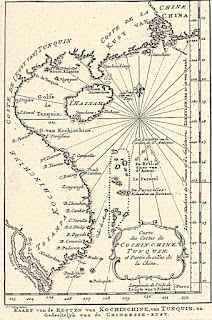Jewish traditions were first exposed to the tale of Lilith, the “Night Hag,” during their Babylonian Captivity from ancient Sumerian sources, and conflating demonology (daimōnion) with fairies, which are liminal beings capable of both beneficence (like a fairy godmother) and wickedness (mischievousness mostly) and from a psychological stance infinitely more fascinating, decided to wed her to Adam. Whether also chthonic or baked in fire, Lilith was understood to be also elemental and thus not derivative, unlike Adam’s second wife Eve, and thus not very keen on the idea of being subservient or second-class.
 After having had liaisons with multiple archangels, God decreed this strident, toxic woman to be no suitable mate and surgically excised Eve as Lilith’s under-study. Apparently, with sentiments more in line with those of fairyfolk, however, Lilith did pine for Adam and for her squandered chances of having children—being that she had become too venomous to nurse any child, no matter how immortal its parentage, having garnered the reputation of being a succubus, which is an awful sounding name for a seductress but is usually just rendered as paramour with no paranormal connotations. The different biological-clocks and this asynchronicity remains a theme in folklore throughout the ages, with Lilith’s curse representing fussy babies that have difficulty breast-feeding and her minions intent on kidnapping human-children, replacing them with an identical-looking changeling. It was taken as a near impossibility for fairies to breed naturally, they replenished their ranks by substituting a wizened, geriatric fairy for a new soul—and in disguise, generally the human foster-parents would care for and for the retired fairy in its old age, though sometimes the changeling could be tricked into betraying its true nature as an old, experienced soul by confronting the infant in question with baby-talk or something equally nonsensical, whereupon the old fairy would protest or attempt to correct the illogical behaviour. If this enchantment is not drawn out in a timely-fashion, the supernumerary child would later show a penchant for developmental disorders and neurological abnormalities—at least that’s how maladjusted offspring were explained through the nineteenth century. Only when fairies were pushed back into the woodwork, supplanted by medicine and machinery, did they begin to take on a diminutive stature and the diaphanous wings, and not uncannily human, characteristics that most associate with fairies today.
After having had liaisons with multiple archangels, God decreed this strident, toxic woman to be no suitable mate and surgically excised Eve as Lilith’s under-study. Apparently, with sentiments more in line with those of fairyfolk, however, Lilith did pine for Adam and for her squandered chances of having children—being that she had become too venomous to nurse any child, no matter how immortal its parentage, having garnered the reputation of being a succubus, which is an awful sounding name for a seductress but is usually just rendered as paramour with no paranormal connotations. The different biological-clocks and this asynchronicity remains a theme in folklore throughout the ages, with Lilith’s curse representing fussy babies that have difficulty breast-feeding and her minions intent on kidnapping human-children, replacing them with an identical-looking changeling. It was taken as a near impossibility for fairies to breed naturally, they replenished their ranks by substituting a wizened, geriatric fairy for a new soul—and in disguise, generally the human foster-parents would care for and for the retired fairy in its old age, though sometimes the changeling could be tricked into betraying its true nature as an old, experienced soul by confronting the infant in question with baby-talk or something equally nonsensical, whereupon the old fairy would protest or attempt to correct the illogical behaviour. If this enchantment is not drawn out in a timely-fashion, the supernumerary child would later show a penchant for developmental disorders and neurological abnormalities—at least that’s how maladjusted offspring were explained through the nineteenth century. Only when fairies were pushed back into the woodwork, supplanted by medicine and machinery, did they begin to take on a diminutive stature and the diaphanous wings, and not uncannily human, characteristics that most associate with fairies today.



















